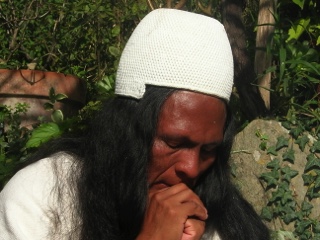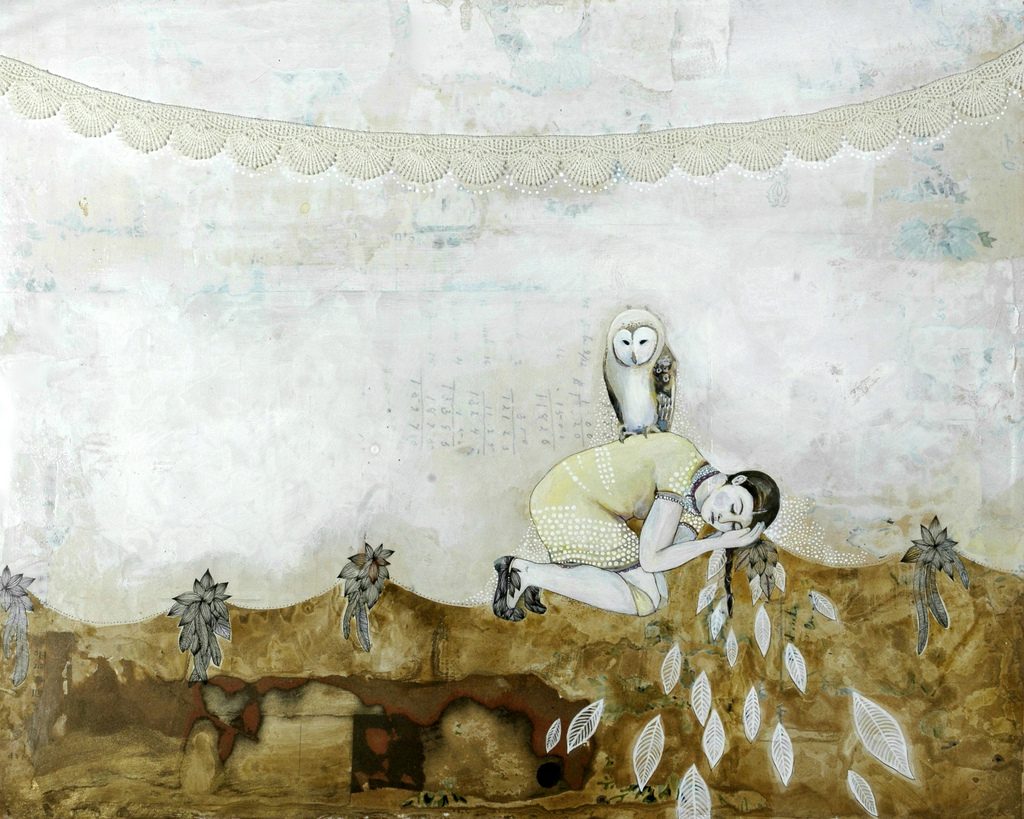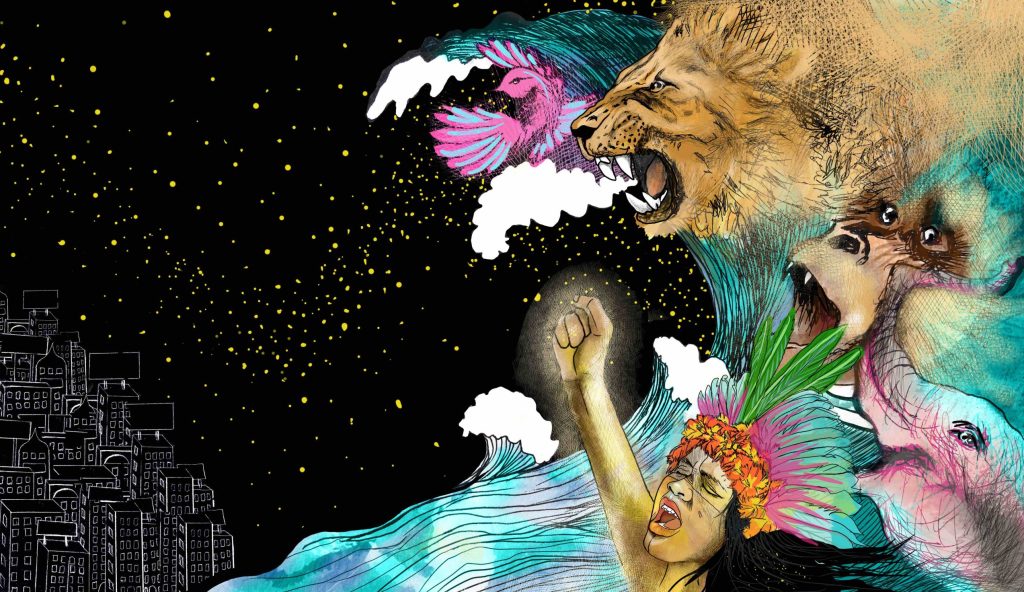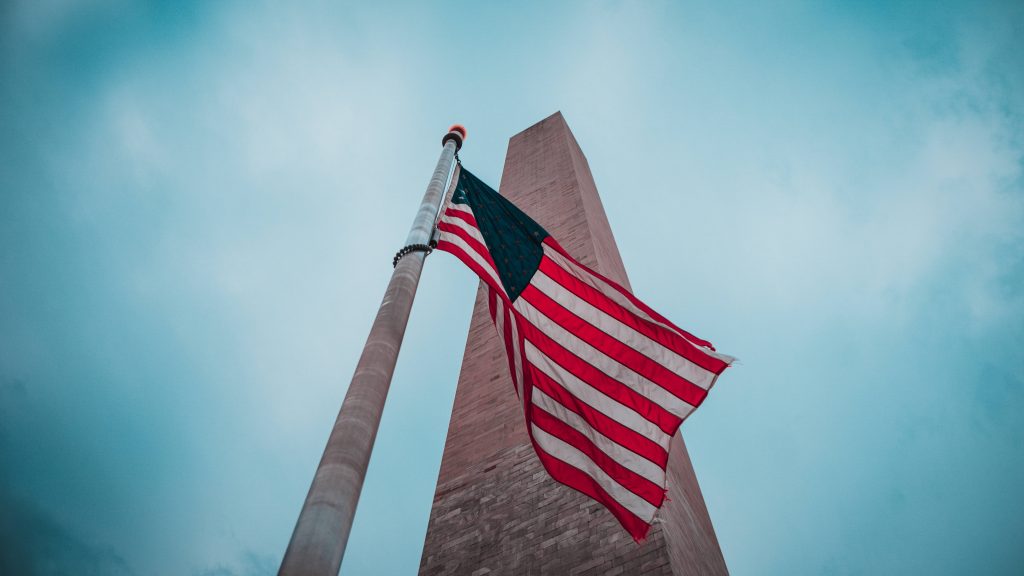Attuned | Global Social Witnessing
War isn’t new; violent conflict is an ancient, disrelational habit familiar to nearly all human societies. What is new about war and other mass-traumatization events in the twenty-first century is the presence of the internet and social media, namely the ease and power of so many to upload images and videos from the battlefield in real time.
For the first time in human history, wherever we are and no matter how far away, we can witness and react to what’s happening in active conflict zones or disaster scenes a world away. Even if we choose to avoid social media and online or television news, it can be difficult for most people to miss what’s happening around us. Bad news, like gossip, is pervasive—and it spreads: an adaptive evolutionary strategy that promotes survival, though if prolonged, it promotes social dysfunction and breakdown. Despite the unprecedented access to information now available, we are often not so much well informed as we are overwhelmed. And if not overwhelmed, we’re likely desensitized, numb, cynical, or shut down.
Modern media sensationalizes news of violence, threat, and danger, profiting off human fear and furthering societal polarization. The massive onslaught of polarizing data we consume is not immediately digestible. In fact, unfettered access to information about active trauma may create what researchers have called secondhand or vicarious traumatization, especially for the highly empathetic person. At the very least, constant news of human struggle, violence, and adversity can result in burnout and compassion fatigue. Yet, the more anesthetized we become to the suffering of others, the less capable we are of responding with discernment and wise action to help end or prevent further suffering in the world. Without knowing it, we may become complicit in the ongoing repetition of humanity’s darkest cultural traumas through unconscious activation of the hidden energies that make trauma possible in the first place.
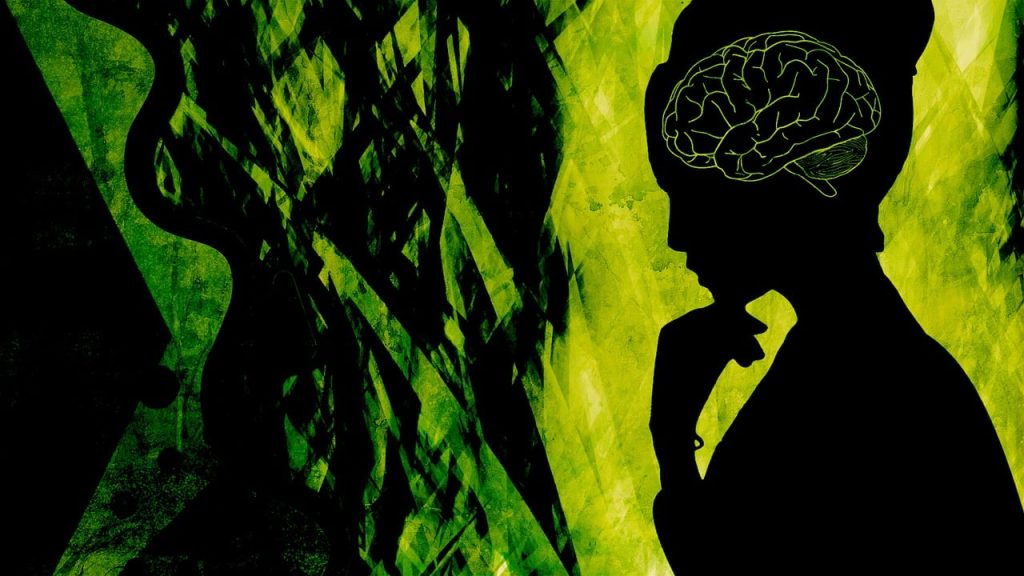
What would trauma-informed media look like?
Sensational news headlines and divisive online engagement activate trauma patterns within the collective unconscious, amplifying apathy and indifference at one end and heightening emotional disruption at the other. News media websites and social media apps are coded for “increased engagement,” because more clicks mean more dollars for shareholders. To support this unwieldy and unethical financial model, artificial intelligence algorithms are designed to push ever more extreme controversy, fear, and antagonism, thereby privileging “incendiary content, [and] setting up a stimulus–response loop that promotes outrage expression.”
The end result has been increased social polarization and conflict, poor mental health outcomes, and further extremes in economic inequity. Is it any wonder that depression, anxiety, addiction, and self-harm are exploding among young people?
What would trauma-informed media look like? It’s a question that deserves critical research. What’s clear is that contemporary societies need to focus as much or more attention on healing and health as they do on increasing gross domestic product. Imagine a new media and economic landscape that is grounded, professional, and ethical, whose leaders value human health above personal profit. Imagine global news media that engenders wider understanding and compassion as it informs us.
You see, collective trauma is not an academic abstraction or even a sociological concept. In the most real sense, it is the mass of unmetabolized energy that exists within and all around us as a result of toxic stress, adversity, shock, and trauma. Even if we don’t know it’s there, the energy of mass trauma affects us. All of us. It shapes our lives and alters our relationships, our communities, and the natural world around us.
There is nothing left untouched by collective trauma. In fact, its nature is so ubiquitous and its effects so insidious that we have come to consider it “normal.” This is just how things are. Just how families are. Just how people are. Just how the world is. Yet nothing could be further from the truth. Integration allows us to harvest the frozen, disclaimed energies of the past and use them to illumine our perspective in the present. As the great German writer, scientist, and statesman Johann Wolfgang von Goethe observed, “Man knows himself only to the extent that he knows the world; he becomes aware of himself only within the world and aware of the world only within himself. Every new object, well contemplated, opens up a new organ of perception in us.”
By opening ourselves to the exploration of trauma’s effects within and around us, we come to know more of ourselves, the world, and one another. After all, only what we acknowledge can be integrated—and the integration of trauma becomes post-traumatic learning. Integration allows us to harvest the frozen, disclaimed energies of the past and use them to illumine our perspective in the present.
What’s more, healing the ethical transgressions of the past develops our ethical understanding today. This wisdom is vital if we wish to meet contemporary ethical challenges: from questions about artificial intelligence, nano tech, genetic engineering, cyberwarfare, new weapons of mass destruction, and other evolutionary concerns. Perhaps one day, a mandate to reckon with and heal historical and collective trauma will be written into the constitutions of nations.
To begin to address the phenomenon of collective trauma at its source, I developed an awareness-based practice called Global Social Witnessing (GSW). GSW is a social mindfulness practice that shows us the limits of our capacity to be a present witness to events—including and especially to traumatic events—that are reported within society.
Through sustained practice of GSW, we begin to see into the gaps, the places where we may intellectually understand the facts of the news stories we consume, but where we become emotionally or even physically stressed and overwhelmed by the contents or where we alternately shut down and numb, potentially unaware that relation has been lost. When this occurs, we are no longer in witness. The gap itself represents the distance (or incongruence) between one’s interior and exterior and contains the unprocessed collective trauma we carry within. We practice GSW to help make the collective trauma field more visible so that step by step, we can begin to integrate the internal fragmentation we all carry.

In its simplest form, GSW is the act of consciously presencing, witnessing, sensing, and feeling into the dense energies of adverse current events—whether the stream of alarming news stories pouring across your daily newsfeed or the sudden outbreak of war in Eastern Europe. Global Social Witnessing can be initiated as an individual practice or facilitated in a group context, even with very large groups. And it is meant to be used in a titrated fashion; as practitioners, we take on one adverse current event at a time.
To address trauma, we must meet it at the root. We must engage in a practice of making conscious that which is unconscious. We must choose to notice, feel, and digest the energies we otherwise instinctively resist, suppress, avoid, disown, and deny. Global Social Witnessing is a practice for being with the difficult energies of the large-scale traumatic events occurring in the world around us: ongoing wars in nations like Afghanistan, Syria, Yemen, Ethiopia, and elsewhere; the mounting cartel violence in South and Central America; continuing civil unrest, armed violence, and human rights abuses in Burkina Faso, Cameroon, Myanmar, Republic of Congo, and beyond; the oppression and genocide of the Uyghur people of China; and the many other human and planetary wounds that call out for our care and attention. Without our care and attention, these compounding traumas will continue unabated. Human rights can only be honored and preserved through genuine relatedness. It is the lack of relatedness that makes the violation of human rights possible.
Global Social Witnessing is a form of dialogic inquiry—defined by one scholar as “the tool kit of discourse in the activity of learning”— in which together we presence the collective field so as to mindfully attend to global events with embodied awareness. In practice, GSW is a model that allows us to make visible the invisible forces that influence our lives in order that we may apprehend and transform them.
Practice | Global Social Witnessing
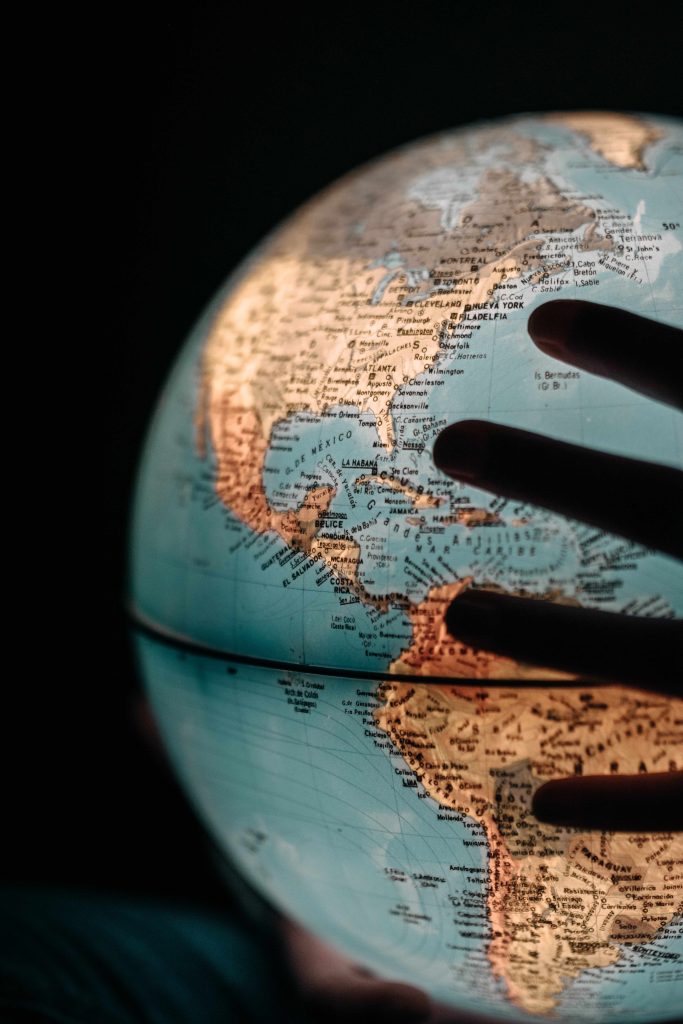
Search for a disquieting piece of news about current events—a headline or news article, for example—to bring into your practice. It should be information that’s difficult or upsetting, without being too overwhelming.
The story you choose could be about a school shooting, a local act of violence, or a story about climate change— whatever feels important to focus on.
Now sit down, and as you read the news headline, check in with your body, noticing any sensations, feelings, images, or impressions that arise. Are you reading the headline intellectually but feeling emotionally or physically numb or disconnected? Do you experience an activation of fear, stress, or upset? Or do you notice a sense of felt connection to the event?
The point of the practice is not to be able to feel or sense the event; the point is to see our limitations. We practice GSW in order to become aware of our “edge,” where the capacity for being an embodied witness stops. The end of your ability to sense and feel marks the beginning of the collective unconscious, or collective absence. The overwhelming nature of the information reduces the function of collective witnessing, or presence, so that the energy of these events doesn’t get processed or reconciled and must therefore repeat.
Widespread use of the internet and mobile devices makes us think of ourselves as super informed, yet numbness, absence, and overwhelm are all too common. These responses to collective trauma prevent us from fully metabolizing the information we experience. However, we can all be more mindful about how we consume the news and engage in the Three-Sync Practice as we do so.
A GSW practice can also be powerful in groups, where members of the group share their inner experience with others who bring their attunement, presence, and witness to the whole.
Global Social Witnessing invites us to align our individual interiors within a wider collective and intersubjective container. When we practice, it is our shared intention to tune into self and other—and to the interior and exterior worlds at the same time. The practice of GSW strengthens our capacity to host the Other within, to embrace the Other with a shared heart. Through the GSW practice, we become more mature global citizens, better equipped to co-create new ideas and approaches for transforming the dense energies of disruption into the vitality of future innovation.
As global citizens, it is incumbent upon us to express global citizenship. We must also recognize the fundamental human responsibility we share, which is to practice making conscious the dark energies of human suffering so that those energies can be digested, integrated, and returned to the life flow of future potential.
Whole states must address the social wounds created by war, colonialism, racism, anti-Semitism, gender violence, and environmental degradation. When done in earnest, this work restores the flow of light, or conscious awareness, to the collective body and makes healthier and more sustainable societies possible.
Gus Speth, the American environmental lawyer and former US senior advisor on climate change, has said, “I used to think that top environmental problems were biodiversity loss, ecosystem collapse, and climate change. I thought that thirty years of good science could address these problems. I was wrong. The top environmental problems are selfishness, greed, and apathy, and to deal with these we need a cultural and spiritual transformation.”
Speth is right, of course, though it’s important to note that the selfishness, greed, and apathy he mentions are in truth only symptoms of the larger problem, which is our unaddressed collective shadow and unhealed collective trauma. It is our willingness to awaken to, experience, and transform these root causes that creates the cultural and spiritual transformation Speth prescribes.
We can think of the global immune system as a refined resonance capacity. It represents the most essential, ancient, and evolutionary wisdom for dealing with the reactive mental, emotional, and psychosocial aspects that arise within us in response to the traumatic residue and accelerating disruption all around us.
R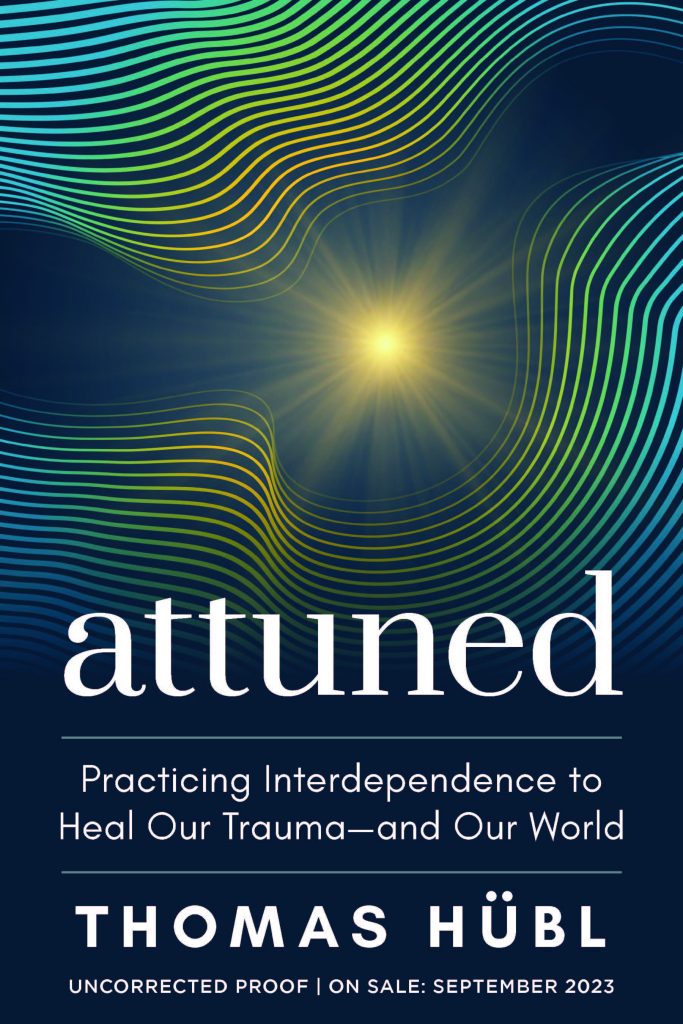 egardless of how far removed we may be physically from unfolding unrest or atrocities—in Ukraine, Yemen, Ethiopia, Haiti, Myanmar, Israel, Palestine, and elsewhere—we are no less affected by them. And it is precisely because we are touched by these events that we have the power to help shift them. Collective healing starts with the immune reaction, the experiences that come up inside us when we’re faced with the realities on the ground or in media reports and images shared during active conflict. Even as distant observers, we can feel disturbed and activated by these events, which can show up in many forms: fear, terror, anger, outrage, numbness, or shutting down.
egardless of how far removed we may be physically from unfolding unrest or atrocities—in Ukraine, Yemen, Ethiopia, Haiti, Myanmar, Israel, Palestine, and elsewhere—we are no less affected by them. And it is precisely because we are touched by these events that we have the power to help shift them. Collective healing starts with the immune reaction, the experiences that come up inside us when we’re faced with the realities on the ground or in media reports and images shared during active conflict. Even as distant observers, we can feel disturbed and activated by these events, which can show up in many forms: fear, terror, anger, outrage, numbness, or shutting down.
Yet it’s our power to simultaneously feel and witness our feelings and reactions that allows us to digest and integrate some measure of the overall trauma energy. This is the collective immune response in its most conscious and participatory state. And it is vitally urgent that we learn to engage in collective self-healing. The global immune system is the organ through which we become activated by disturbance in the field, but it’s also the instrument through which we may more consciously attune to the world around us in order to integrate that disturbance and restore balance to the living system.
Only a small number of us—a critical mass if you will—is required to engage before a new level of collective coherence becomes established in sympathetic resonance, ringing like a tuning fork across the field, inviting the entire world to join.
Excerpted from Attuned: Practicing Interdependence to Heal Our Trauma―and Our World by Thomas Hubl. Sounds True, September 2023. Reprinted with permission.



